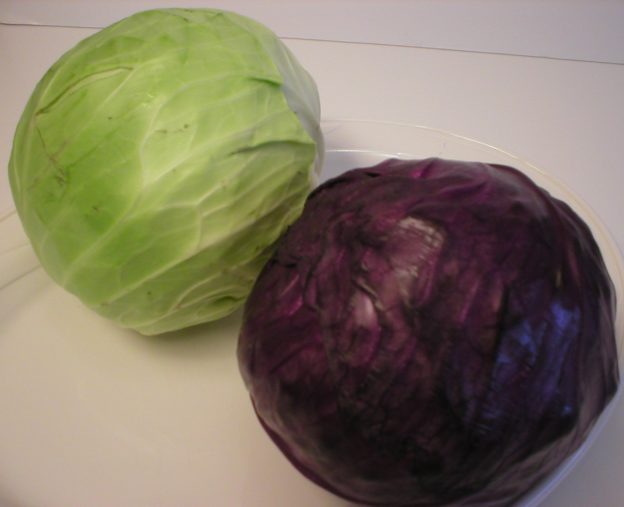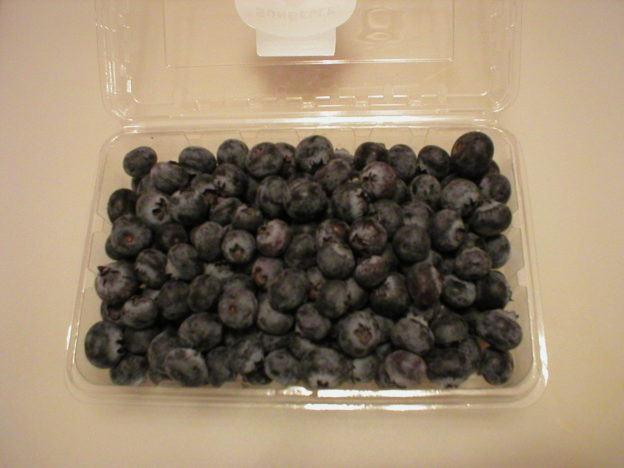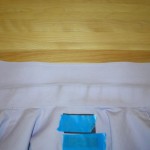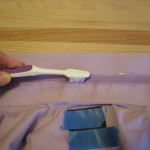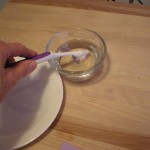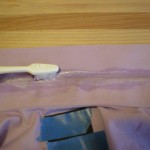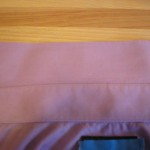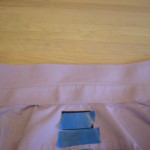What is baking soda?
Baking soda is sodium bicarbonate. It is an alkaline compound that will produce carbon dioxide gas when combined with an acid. It is found in nature in crystalline form, and is ground into a fine powder for culinary and household use.
How is it used in baking?
Baking soda is used as a leavening agent in baked goods that contain an acidic ingredient. When it comes in contact with an acid, such as vinegar, citrus juice, buttermilk, yogurt or cream of tartar, it forms carbon dioxide gas bubbles. The small bubbles get trapped in the food batter, causing it to inflate, or rise. The batter is then baked immediately.
Baking soda is often used in baked goods (such as quick breads, pancakes, muffins, cakes and fried foods) that contain acidic ingredients so it will create the leavening or rise in the finished product. Since the reaction with acid occurs quickly, the leavening time is much shorter than when yeast is used as a leavening agent. When baking soda is used as a leavening agent, the foods are cooked immediately. When the food is heated, the leavening is “fixed” in place so the expansion caused by the gas bubbles becomes set. If the food is not baked immediately, the gas bubbles may deflate and the product may not rise as expected.
Tip: When using baking soda in a baked product, be sure to add it to the dry ingredients before liquid ingredients are added. Stir or whisk the dry ingredients well to combine everything before liquid is added. Otherwise, if the baking soda is not disbursed well, the finished product may have large holes in it.
Is baking soda the same thing as baking powder?
Although baking powder does contain baking soda, the two are not the same thing. Baking powder is a mixture of baking soda, one or more acid salts (usually cream of tartar and sodium aluminum sulfate), and cornstarch (to absorb moisture so a reaction won’t take place until liquid is added to a batter). Baking powder usually causes two reactions at different times. This type of baking powder is often referred to as “double acting baking powder.” The first reaction takes place when liquid is added to the batter. The acid and baking soda in the baking powder react causing bubbles to form in the batter. The second reaction takes place when the batter is placed in the oven. The gas bubbles expand, causing the baked product to expand even further. The heat in the oven causes the expanded batter to “set” maintaining the lift or rise.
Since there are two reactions when baking powder is used, there can be a slight delay (15 to 20 minutes) before the product is baked, and leavening will still occur. Baking powder is typically used in recipes that do not contain acidic ingredients.
Shelf Life of Baking Soda vs Baking Powder
When stored in an airtight container in a cool, dry place, baking soda has an indefinite shelf life, although some producers recommend buying fresh baking soda every three years.
Baking powder should also be kept in an airtight container in a cool, dry place. It generally has a shelf life of six months to one year. Check the “Best by” date on the canister to determine its age. Discard baking powder when it is no longer active.
How to Test the Activity of Baking Powder
Place ½ teaspoon of baking powder in a bowl. Pour ¼ cup of boiling water over the baking powder. It should immediately bubble up violently. If it does, it’s still good. If it doesn’t bubble up, it is old and should be discarded. To see a demonstration of how this is done, view my video here…
How to Test the Activity of Baking Soda
Mix ¼ teaspoon of baking soda with 2 teaspoons of vinegar. The mixture should bubble up immediately. If it does not, the baking soda needs to be replaced. To see a demonstration of how this is done, view my video here…
Are baking soda and baking powder interchangeable in recipes?
No, the two are not interchangeable in recipes.
What happens if you use too much baking soda or baking powder in a recipe?
Too much baking soda added to a recipe may cause a soapy flavor and a coarse, open crumb (very large air bubbles/spaces in the finished product). Baking soda can cause cocoa powder to redden when baked. This is a normal reaction and the origin for the name “Devil’s Food Cake”.
Too much baking powder can cause the product to taste bitter. It can also cause the batter to rise too fast, then collapse, resulting in a flattened baked product. For instance, cakes made with too much baking powder will be sunken in the middle and have a coarse crumb (extra-large cells or air spaces).
What can I do with baking soda besides bake with it?
THIS is where the list gets long. Beside using baking soda as a leavening agent in baked goods, it has MANY other uses in the kitchen and around the house. The following is just a smattering of possibilities, since new uses for baking soda are being found all the time.
In the Kitchen
* Baking soda is well known for its ability to absorb odors. A small bowl or box of baking soda is often placed in refrigerators, freezers, or other enclosed areas to absorb odors. Replace it once a month for best results.
* Rubber gloves in the kitchen can get wet inside and smelly. To keep them fresh, sprinkle a little baking soda inside them. You’ll also find they are easier to slip on and off.
* Loosen baked on grease by sprinkling baking soda in the pan. Add some dish detergent and hot water. Allow the pan to soak for a while. The pan will be easier to clean. [NOTE: Do not use baking soda on aluminum cookware or bakeware. It will react with the aluminum and may discolor the pan.]
* Help to soften dry beans when you cook them and make them less gas-producing, add a little baking soda to the soaking water. This can be especially helpful if the beans are old…the older the are, the drier they get, and the longer it takes to cook them. Shorten the cooking time by adding baking soda to the soaking water. Add 1/4 teaspoon of baking soda per pound of beans in one gallon of water. Rinse them well after being soaked. A little baking soda may also be added to the cooking water. A mere ¼ teaspoon may be added to the cooking water to soften the beans and help them to cook faster. This is due to the alkalizing effect of the baking soda.
* Baking soda is mildly abrasive. This property makes it an effective agent for removing stains from coffee mugs, kitchen counters, microwaves, and kitchen tiles, along with grease stains. Make a paste with a little baking soda and a small amount of water. GENTLY rub it on the stained area with a sponge or cloth. When in doubt, do a test rub in an inconspicuous place. Rinse with plain water and buff the area dry. To see a video demonstration of how to remove stains from a coffee mug, watch this…
* Neutralize trash odors. If your kitchen trash can has an odor, sprinkle some baking soda in it to help neutralize the odors.
* Make fluffy omelets by adding ¼ teaspoon of baking soda to every three eggs used in the omelet. Don’t be tempted to add more baking soda, as it may make the eggs taste bland. Also, don’t oversalt your eggs since baking soda contains sodium.
* Baking soda has been found to remove chemical residues from the surface of conventionally-grown fruits and vegetables. Soak the food in a solution of 1 teaspoon of baking soda to 1 to 2 cups of water for 12 to 15 minutes. Rinse the food well, pat it dry, then store it and use it as usual. Note that this removes chemical residues from the surface. It will not remove chemicals that have soaked into the food. [This is a procedure I use on a regular basis and I can say from personal experience that it works. Here’s a video I have on this topic…
* Baking soda has been used to remove tarnish from silverware. Line a baking pan with aluminum foil. Add 1 tablespoon of baking soda to the foil-lined pan. SLOWLY pour in ½ cup of white vinegar. (Yes, there will be a reaction!) Pour in one cup of boiling water, then place your tarnished silver in the pan. The tarnish should begin to disappear almost immediately. Most of the silverware can be removed within 30 seconds. Heavily stained silverware may take up to one minute to be cleaned. Rinse your cleaned silverware in plain water and wash as usual. The tarnish will be left as a residue at the bottom of the baking pan. Discard it and the foil, then wash the pan.
* Another way to clean tarnished silverware is to gently rub a paste of three parts of baking soda to one part of water onto the silverware with a soft cloth or sponge. Rinse and dry.
* Make a paste of baking soda and water and rub it on plastic containers to remove stains.
* Try baking soda as a natural oven cleaner. [Note that this should be used only on conventional ovens, not self-cleaning ovens.] Sprinkle baking soda on the bottom of the oven, while avoiding getting it on the heating element. Spray with a water bottle to dampen the baking soda. The sides can be cleaned by spreading on a paste made of 3 parts of baking soda with 1 part of water. Allow it to sit overnight. Scrub it off in the morning. Rinse thoroughly.
* Use baking soda and vinegar to remove burned on milk from a [NON-ALUMINUM] pot. This is a trick that I learned a long time ago and it has worked many times for me and my video viewers as well. Simply sprinkle a generous amount of baking soda on the burned milk in the pot. Add enough water to the pot to cover the burned area by about one inch. Add a generous portion of white vinegar to the pot. (Notice there are no specific measurements here…that’s deliberate!) The mixture will bubble vigorously. Turn the stove on high and bring the mixture to a boil. (Monitor it carefully because the baking soda and vinegar will quickly bubble up and raise within the pot. If it gets too high, lift the pot off the stove briefly and the bubbles will go back down.) Allow the mixture to boil for about 5 minutes. Turn off the heat and allow the pot to sit on the burner until the mixture cools completely. The pot is ready to be washed. The burned area should lift off easily with little scrubbing. Here’s a video where I demonstrated this technique …
* For an effective homemade cleaning solution for your refrigerator, simply mix 1 teaspoon of baking soda in a quart of warm water. Use the solution to wipe off the refrigerator, inside and out.
* To deodorize and clean your garbage disposal, pour 1 cup of baking soda down the drain while simultaneously running warm water. Then run your disposal for one minute, while running warm water, until all the baking soda is gone. This will help keep the grinding mechanism free of grease.
* To remove odors from plastic containers, first wash the container well. Then add 2 tablespoons of baking soda and fill the container with hot water. Place the lid on the container and shake well to dissolve the baking soda. Allow it to soak for 2 hours up to overnight (especially with strong odors). Wash the container well. This method can also work with juice pitchers, thermal bottles, lunch boxes, and any glass or plastic food container.
* To remove odors from your hands after preparing foods like garlic, onions or fish, wet your hands, sprinkle on some baking soda. Rub your hands together well, then rinse and dry.
* If the inside of your microwave is REALLY dirty with a lot of baked-on splattered food, baking soda can come to the rescue. Mix 2 tablespoons of baking soda with 1 cup of water in a microwave-safe bowl. Let this solution boil in the microwave on high for a few minutes, so that moisture collects on the inside walls of the microwave. Remove the bowl, then use paper towels to wipe down the inside of the microwave, including the door, and door seal. Then wipe it all down again with a damp sponge or cloth.
* To deodorize a wood cutting board, apply a paste of 3 parts of baking soda to 1 part of water. Leave the paste on for about 10 minutes. Rinse well, then dry.
* Remove black heel marks from kitchen linoleum or vinyl flooring with baking soda and a damp sponge or nylon scrubber. Rinse and dry the area.
* If you’re baking and a recipe calls for baking powder and you don’t have any, use ½ teaspoon of baking soda plus 1 teaspoon of cream of tartar in place of 2 teaspoons of baking powder. Since this is not a “double-acting” baking powder substitute, bake the item immediately after the liquid and dry ingredients are mixed together.
Personal Care
* Baking soda has been used to relieve heartburn or acid reflux. Dissolve a teaspoon of baking soda in a glass of water and drink the mixture slowly. Note that baking soda is high in sodium. If you need to restrict your sodium intake, this tactic may not be recommended for you. Check with your healthcare practitioner first. Also, do not drink this on a regular basis as it may cause metabolic alkalosis if ingested too often.
* Some people have used a baking soda solution as a mouthwash. Add ½ teaspoon of baking soda to a half glass of warm water. Swish around your mouth as usual. This will increase the pH of your mouth, which can inhibit the growth of bacteria. It also has been found to freshen the breath.
* Baking soda has been found to soothe canker sores inside the mouth. Rinse your mouth with baking soda mouthwash (as in the previous bullet point…1/2 teaspoon of baking soda in half a glass of warm water) once a day until the sore heals.
* Toothpaste with baking soda has been found to whiten teeth and remove dental plaque more effectively than toothpaste without baking soda. This is believed to be due to the mild abrasiveness and antimicrobial properties of baking soda.
* Some people use baking soda as an effective deodorant. Patting your armpits with a little baking soda can help to neutralize the acidic waste products of bacteria that cause the odor.
* A baking soda bath is often recommended to soothe itchy skin from insect bites and bee stings. Add 1 to 2 cups of baking soda to a tub of warm water. Soak in the tub for 10 to 40 minutes. Rinse with fresh water afterwards and drink plenty of water. If you don’t want to bother with a bath, just make a paste of baking soda and a little water. Apply the paste to the affected area and allow it to sit for a little while until the itching or stinging sensation stops. Rinse the paste off with cool water.
* For sunburn relief, add a few heaping tablespoons of baking soda to a bath tub along with a cup of oats. Fill the tub with cool water and soak for 15 to 20 minutes. Do not scrub the skin. Dab yourself dry with a towel afterwards.
* Sooth the irritation from vaginal yeast infections with a baking soda bath. A 2014 study found that baking soda killed Candida cells that led to yeast infections. Furthermore, baking soda has been found to have antifungal affects.
* Help sooth diaper rash by soaking the baby’s bottom in a baking soda bath for 10 minutes, three times a day. Use 2 tablespoons of baking soda in a tub of water. Pat the baby dry (do not rub the skin).
* Make a soothing foot bath by soaking feet for 10 minutes in a solution of 4 tablespoons (1/4 cup) of baking soda in 4 cups of warm water. This will relieve tired feet, soften calluses, and soothe athlete’s foot.
* To keep hair combs and brushes clean and free of oils, soak them overnight in a solution of 1 teaspoon of baking soda in one cup of water. In the morning, rinse them off and you’re ready to start your day!
* A baking soda bath can help relieve the itching and redness from eczema. Add ¼ cup baking soda to the bath water. Soak in the tub for 10 to 15 minutes. Pat the skin with a towel to remove excess water, and apply moisturizer to the skin afterwards, while the skin is still damp.
* Irritation from poison ivy and poison oak can be relieved with a baking soda bath. Dissolve ½ cup of baking soda in a tub of warm water. Soak up to 30 minutes.
* Urinary tract infections can be relieved with a baking soda bath. Add ¼ cup of baking soda to the bath water. Adults, soak up to 30 minutes. Young children should soak for 10 to 15 minutes. Do this twice a day.
* Baking soda can be used to remove odors from shoes. Put two tablespoons of baking soda in the center of a thin cloth. Gather the corners of the cloth and secure the edges with a rubber band or string. Place a sachet inside each smelly shoe. Remove the sachet when you’re ready to wear the shoe.
Safety of Baking Soda Baths. Generally, baking soda baths are considered to be safe and well-tolerated by most people. However, do not take a baking soda bath if you are pregnant or breastfeeding, have high blood pressure, have diabetes, have open wounds or serious infections, or are prone to fainting.
Around the House
* If you enjoy air fresheners in your home, try a homemade baking soda air freshener. Place 1/3 cup of baking soda in a small jar. Add 10 to 15 drops of your favorite essential oil. Cover the jar opening with a clean cloth and secure it with a string, ribbon or rubber band. When the scent starts to fade, gently shake the jar a few times. Add more essential oil as needed.
* Use baking soda to help whiten your laundry. Add ½ cup of baking soda to your washer along with your usual laundry detergent. The baking soda can help to remove stains from your clothes. Also, it will soften the water, so you may be able to use less laundry detergent.
* Baking soda can act as a multi-purpose cleaner in the bathroom. Make a paste with baking soda and a little water. The paste can be used to clean bathroom sinks, tiles, bathtubs, and showers. Use a sponge to apply the paste to scrub the area you want to clean. Allow it to sit for 15 to 20 minutes. Wipe the area down with a damp cloth afterwards.
* To clean your toilet bowl, routinely sprinkle some baking soda in the bowl and scrub with a toilet brush. For stained bowls, pour in ½ cup of baking soda and ½ cup of white vinegar. Scrub with a toilet brush, then flush. Be careful when doing this in case the bubbling action splashes upward!
* To remove perspiration stains from clothing, make a paste of baking soda and a little water. Rub the paste into the stained area and let it sit for one hour, then launder as usual.
* Did you accidentally spill a little gasoline on your clothes? Remove the odor by sprinkling the stained area with some baking soda. Place your clothes in a trash bag and seal it up. Let them sit there for a few days, then launder as usual.
* Is it winter and you’ve run out of ice melt? Sprinkle a little baking soda on the ice on your steps. It will provide some traction and melt the ice. Unlike rock salt, it won’t damage indoor or outdoor surfaces.
* For a safe way to clean your toothbrush, let it soak in a baking soda and water solution overnight.
* Do you have clogged bathroom drains? For a simple drain cleaner, start by pouring a cup of boiling water down the drain to help loosen things up. Mix one cup of baking soda with 1 cup of salt. Place ½ cup to 1 cup of white vinegar in a separate measuring cup. Alternately spoon the baking soda and salt mixture into the drain, flushing it with a little white vinegar to help the dry mixture go down to the clog. Be careful, as it will bubble up! Once all the dry mixture and vinegar have been placed in the drain, cover with the drain plug and wait for 15 minutes. Then pour a large pot of boiling water down the drain. This will clear most clogs.
* Mop your tile floors clean with a solution of ½ cup of baking soda in a bucket of warm water.
* Make cloth diapers easier to clean by first soaking them in a solution of ½ cup of baking soda in 2 quarts of warm water. They should come out cleaner when laundered.
* Help keep cut flowers longer by adding a teaspoon of baking soda to the water in the vase.
* Help to keep your kitty’s litter box smelling fresh by sprinkling the bottom of the box with baking soda before adding litter. Use about one cup of baking soda to three pounds of litter. If you need to clean the box but are short on time, sprinkle some baking soda on top and give it a light stir. This will help keep odors in check for a short while until you can change the litter.
Resources
https://www.thespruceeats.com/what-is-baking-soda-p2-1328637
https://www.joyofbaking.com/bakingsoda.html
https://www.davidlebovitz.com/how-to-tell-if-baking-powder-is-still-good/
https://www.healthline.com/nutrition/baking-soda-benefits-uses#2.-Mouthwash
https://www.healthline.com/health/baking-soda-bath
https://pmaonline.com/posts/adult-primary-care/8-ways-to-treat-sunburn-at-home/
https://www.almanac.com/content/best-baking-soda-uses
https://www.liquidplumr.com/diy-plumbing-tip/how-baking-soda-and-vinegar-cleans-drains/
https://www.thankyourbody.com/uses-for-baking-soda/
https://www.networx.com/article/6-ways-not-to-use-baking-soda
https://www.readersdigest.ca/home-garden/tips/5-things-do-baking-soda/
https://www.cooksillustrated.com/articles/1745-can-baking-soda-make-beans-cook-faster
https://www.tasteofhome.com/article/degassing-beans/
https://nutritionfacts.org/questions/does-adding-baking-soda-to-soaking-beans-reduce-raffinose/
https://skillet.lifehacker.com/make-extra-tender-beans-with-a-little-baking-soda-1842156539
https://www.healthline.com/nutrition/10-baking-powder-substitutes#TOC_TITLE_HDR_5
Baker, Jerry. (2006) Grandma Putt’s Old-Time Vinegar, Garlic, Baking Soda, and 101 More Problem Solvers. USA: American Master Products, Inc.
Ciullo, Peter A. (1995) Baking Soda Bonanza. New York, NY: Harper Collins Publishers, Inc.
About Judi
Julia W. Klee (Judi) began her journey enjoying “all things food” in elementary school when she started preparing meals for her family. That love of food blossomed into a quest to learn more and more about health and wellness as related to nutrition. She went on to earn a BS Degree in Food and Nutrition, then an MS Degree in Nutrition. She has taught nutrition and related courses at the college level to pre-nursing and exercise science students. Her hunger to learn didn’t stop upon graduation from college. She continues to research on a regular basis about nutrition as it relates to health. Her hope is to help as many people as possible to enjoy foods that promote health and wellness.


